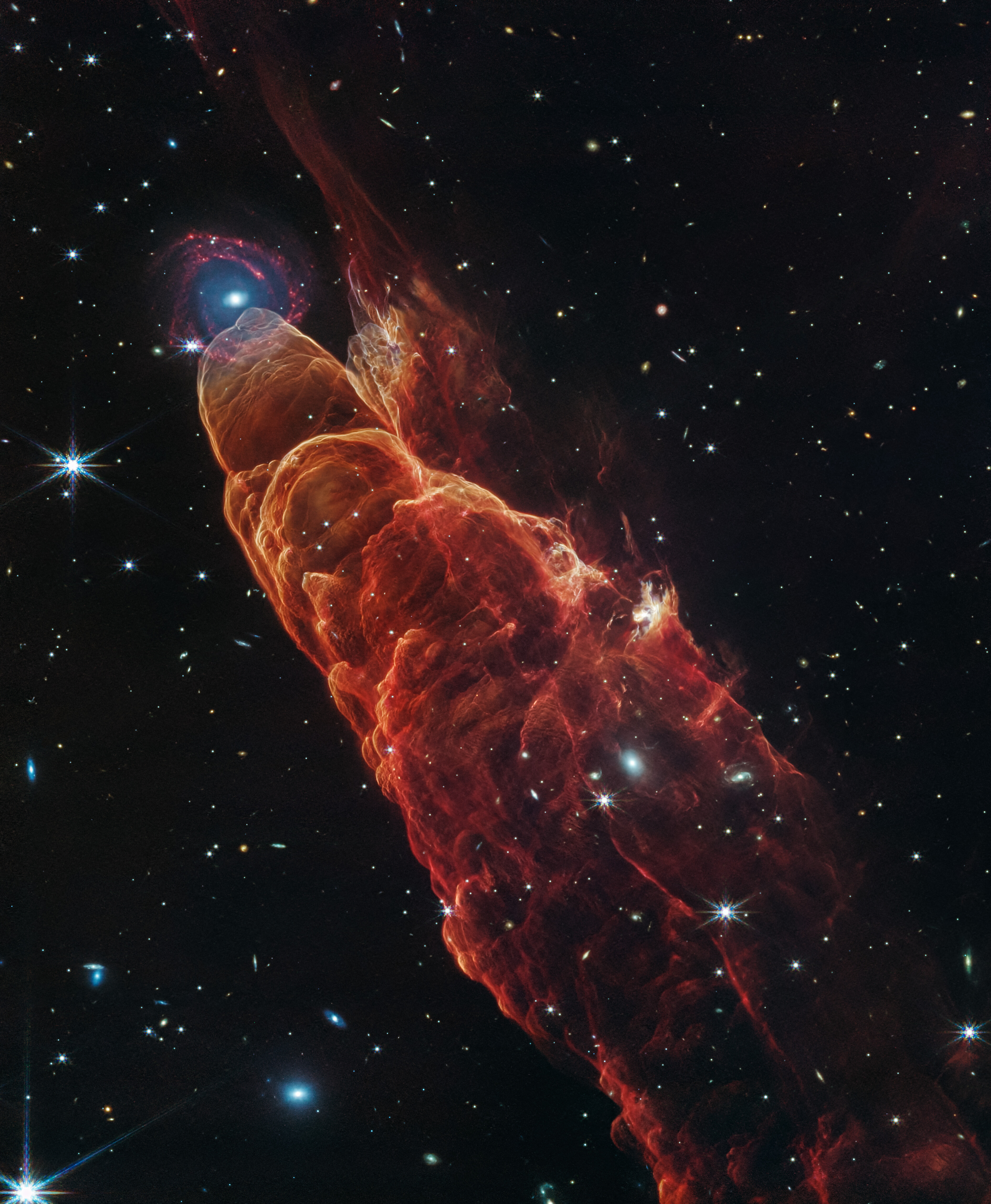 The James Webb Space Telescope has provided an unprecedented look at Herbig-Haro 49/50, nicknamed the Cosmic Tornado, located approximately 630 light-years from Earth in the constellation Chamaeleon. This protostellar outflow is the result of powerful jets of gas ejected by a young star. These jets collide with the surrounding interstellar medium, creating shock waves that heat the gas and cause it to emit light at visible, infrared and even longer wavelengths.
The James Webb Space Telescope has provided an unprecedented look at Herbig-Haro 49/50, nicknamed the Cosmic Tornado, located approximately 630 light-years from Earth in the constellation Chamaeleon. This protostellar outflow is the result of powerful jets of gas ejected by a young star. These jets collide with the surrounding interstellar medium, creating shock waves that heat the gas and cause it to emit light at visible, infrared and even longer wavelengths.
JWST's high-resolution infrared images, captured using both the Near-Infrared Camera (NIRCam) and the Mid-Infrared Instrument (MIRI), reveal intricate details of the outflow's structure, including its turbulent appearance. MIRI played a crucial role in this discovery by providing detailed observations in the mid-infrared range, which allowed astronomers to trace the location of glowing hydrogen molecules, carbon monoxide molecules, and energised grains of dust.
The observations also show a stunning juxtaposition with a distant spiral galaxy, with a blue compact core of stars and its red dust spirals, providing a unique perspective on the scale and complexity of the Universe.
By studying objects like Herbig-Haro 49/50, astronomers can gain valuable insights into the mechanisms that drive star formation and the dynamic interactions between young stars and their natal clouds.
Pamela Klaassen, astronomer at UK ATC, said: “These detailed observations of the Cosmic Tornado offer a glimpse into the complex and chaotic environments where stars are born, shedding light on the early stages of stellar development and the forces at play in star-forming regions."
Find out more.
